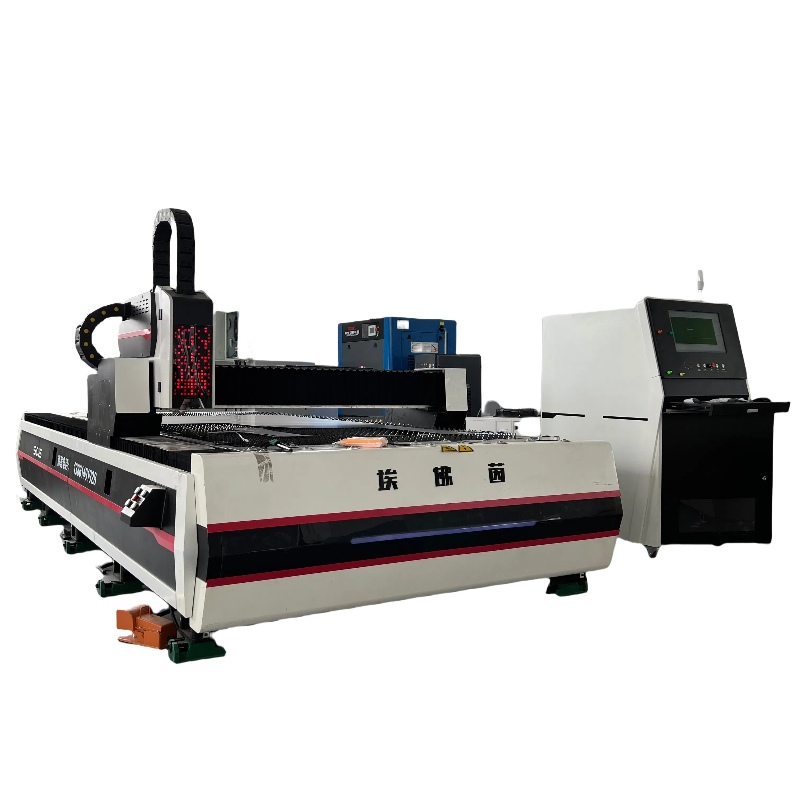Exploring the Safety Measures for Operating Laser Cutters
Laser cutters have revolutionized the manufacturing industry, allowing for precise and efficient cutting of various materials. However, with the power and capabilities of laser technology come potential hazards that must be managed effectively. At AIFOYIN, we understand the importance of safety in operating laser cutting machines, such as our Open Dual Drive Fiber Laser Cutting Machine. This blog will explore essential safety measures to consider when operating laser cutters to ensure a safe working environment.

Understanding Laser Cutter Technology
Laser cutters work by focusing a high-powered laser beam onto a material, melting or vaporizing it to create precise cuts. While this technology offers numerous advantages, including speed and accuracy, it also poses risks such as burns, eye injuries, and fire hazards. Therefore, implementing safety measures is crucial in any setting where laser cutters are used.
Key Safety Measures for Laser Cutter Operations
1. Proper Training and Certification
Before operating a laser cutter, all personnel should receive comprehensive training on the machine's operation and safety protocols. Training should cover:
- Understanding the machine's components: Familiarize operators with the laser cutter's parts, including emergency shut-off switches.
- Operational procedures: Teach safe operating practices, including how to set up materials and adjust settings.
- Emergency response: Train staff on how to respond to emergencies, such as fires or equipment malfunctions.
2. Personal Protective Equipment (PPE)
Wearing appropriate PPE is essential for protecting operators from potential hazards associated with laser cutting. Recommended PPE includes:
- Safety glasses: Laser safety goggles specifically designed to filter out harmful wavelengths of light.
- Flame-resistant clothing: To protect against burns from sparks or molten material.
- Gloves: Heat-resistant gloves can help protect hands when handling hot materials.
3. Adequate Ventilation
Laser cutting can produce harmful fumes and gases depending on the material being cut. Ensuring proper ventilation in the workspace is critical to maintaining air quality. This can be achieved through:
- Local exhaust systems: Installing fume extraction systems that capture harmful emissions at the source.
- General ventilation: Ensuring that the workspace has adequate airflow to dilute any hazardous fumes.
4. Fire Safety Measures
Given that laser cutting involves high temperatures, implementing fire safety measures is vital:
- Fire extinguishers: Ensure that appropriate fire extinguishers are readily available and easily accessible in the workspace.
- Fire-resistant materials: Use fire-resistant barriers or curtains around the laser cutter to contain any potential fires.
- Regular inspections: Conduct routine checks of fire safety equipment and ensure that all personnel are trained in fire response protocols.
5. Regular Maintenance and Inspections
Maintaining laser cutters in good working condition is essential for safe operation:
- Routine checks: Perform regular inspections of the machine's components, including lenses, mirrors, and cooling systems.
- Scheduled maintenance: Follow manufacturer guidelines for maintenance schedules to ensure optimal performance and safety.
- Calibration: Regularly calibrate the machine to ensure accurate operation and prevent malfunctions.
6. Material Handling Protocols
Proper handling of materials before, during, and after cutting is crucial for safety:
- Secure placement: Ensure that materials are securely positioned on the cutting bed to prevent movement during operation.
- Avoiding flammable materials: Be cautious about using flammable materials near the laser cutter; always check material specifications before cutting.
- Post-cutting procedures: Allow cut pieces to cool before handling them to avoid burns.
7. Emergency Shut-off Systems
Every laser cutter should be equipped with easily accessible emergency shut-off systems:
- Emergency stop buttons: Ensure that operators know where these buttons are located and how to use them effectively.
- Automatic shutdown features: Some advanced laser cutters come with automatic shutdown features that activate in case of a malfunction or unsafe condition.
Conclusion
Operating a laser cutter safely requires a combination of proper training, personal protective equipment, effective ventilation, fire safety measures, regular maintenance, careful material handling, and emergency preparedness. At AIFOYIN, we prioritize safety in our operations and ensure our products meet stringent safety standards.
By following these safety measures, businesses can minimize risks associated with laser cutting while maximizing productivity and efficiency. If you are interested in learning more about our advanced laser cutting solutions or need assistance with your existing equipment, please reach out! Together, we can create a safer working environment while harnessing the power of laser technology for your manufacturing needs.
- Art
- Causes
- Crafts
- Dance
- Drinks
- Film
- Fitness
- Food
- Giochi
- Gardening
- Health
- Home
- Literature
- Music
- Networking
- Altre informazioni
- Party
- Religion
- Shopping
- Sports
- Theater
- Wellness


